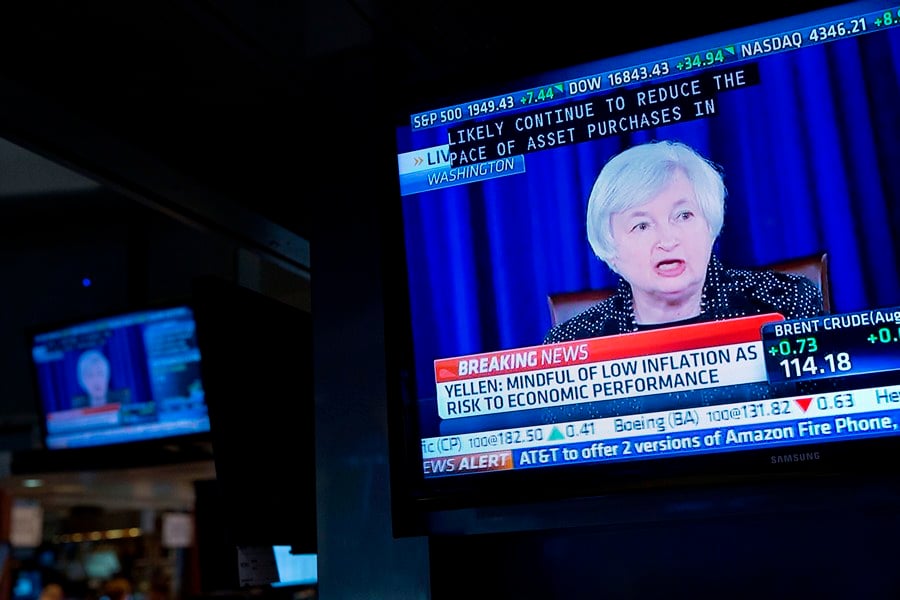Most Federal Reserve officials agreed their new policy guidance means they are unlikely to raise interest rates before late April, and a number expressed concern inflation could remain too low, minutes of their December meeting showed.
“Most participants thought the reference to patience indicated that the committee was unlikely to begin the normalization process for at least the next couple of meetings,” according to the minutes of the Dec. 16-17 Federal Open Market Committee meeting released Wednesday in Washington.
The minutes indicate broad support on the committee for Chair Janet Yellen's assessment of the likely timing of an interest-rate increase she delivered at a press conference following the meeting.
2015 set to exceed expectations
With the U.S. economy strengthening and unemployment at a six-year low, the FOMC in December dropped a pledge to keep interest rates low for a “considerable time.” The panel instead said it will be “patient” as it weighs when to raise rates for the first time since 2006.
The S&P 500 Index maintained advances after the minutes were released, rising 1.1% to 2,023.78 at 2:16 p.m. in New York. The benchmark 10-year Treasury yield rose two basis points, or 0.02 percentage point, to 1.96%.
The minutes showed some Fed officials last month expressed concern about the outlook for inflation, which has remained below the central bank's target for 31 straight months.
“A number of participants saw a risk that it could run persistently below their 2 percent objective, with some expressing concern that such an outcome could undermine the credibility of the committee's commitment to that objective,” the minutes showed.
INFLATION GOAL
In its December statement, the FOMC said it expects inflation to move gradually back toward its target as the job market improves and the impact of cheaper energy dissipates.
The minutes show some misgivings about the new guidance on interest rates.
“Some participants regarded the revised language as risking an unwarranted concentration of market expectations for the timing of the initial increase in the federal funds rate target on a narrow range of dates around mid-2015,” according to the record of the session.
Fed officials also said the faltering global economy may be a threat to the U.S., while concluding that those risks were “nearly balanced” by positive developments.
“Many participants regarded the international situation as an important source of downside risks to domestic real activity and employment, particularly if declines in oil prices and the persistence of weak economic growth abroad had a substantial negative effect on global financial markets or if foreign policy responses were insufficient,” the minutes showed.
CONSUMER CONFIDENCE
Several policy makers said consumer and business confidence and payroll gains suggest the economy “may end up showing more momentum than anticipated,” while a few others said the boost to spending from cheaper oil and gas prices “could turn out to be quite large.”
Some officials worried the oil decline could reduce longer-term inflation expectations, while others were concerned a drop in market-based inflation measures might reflect that “such a decline had already begun.”
Even so, a couple of others said that if the jobless rate kept falling quickly, “wage and price inflation could rise more than generally anticipated,” according to the minutes.







